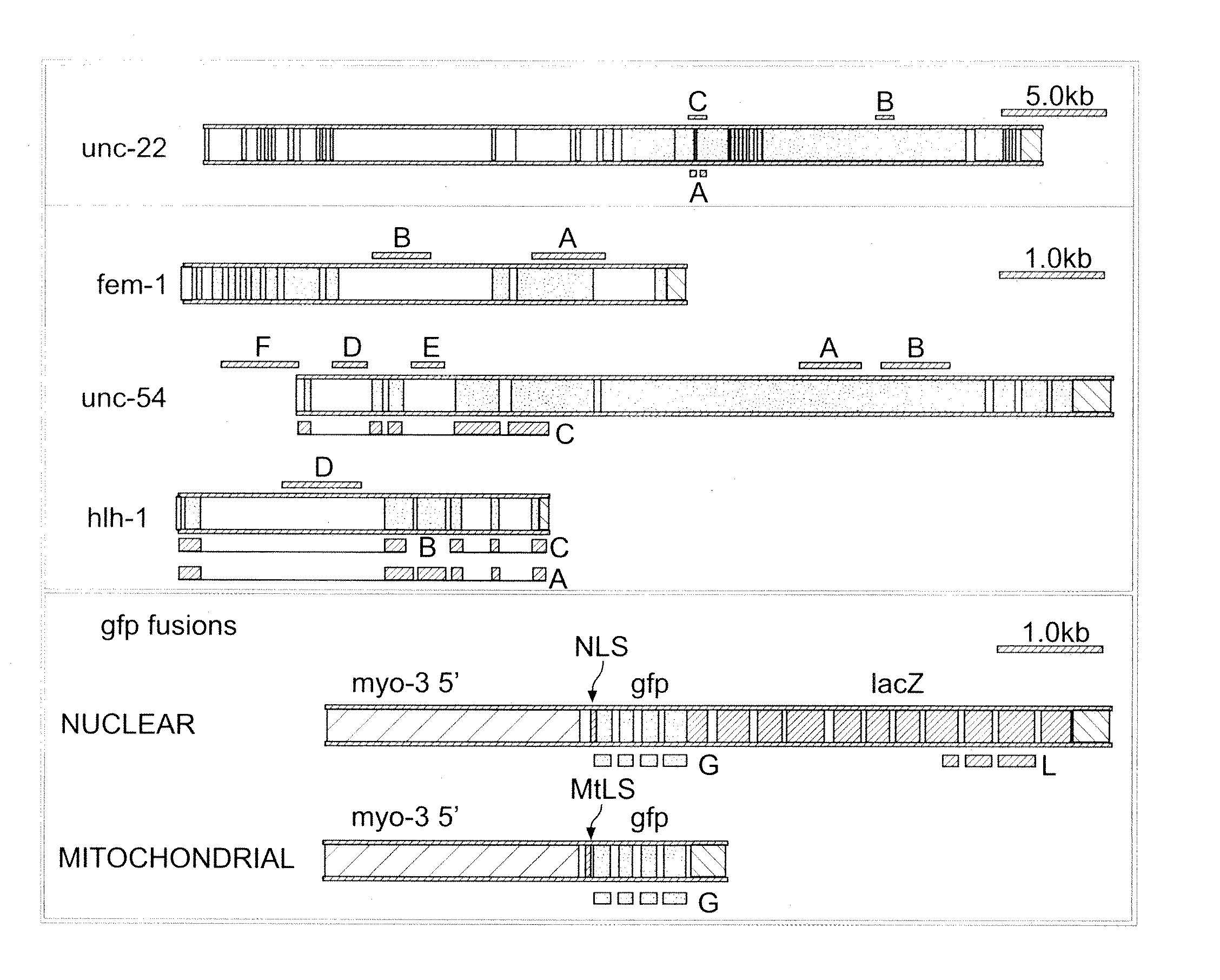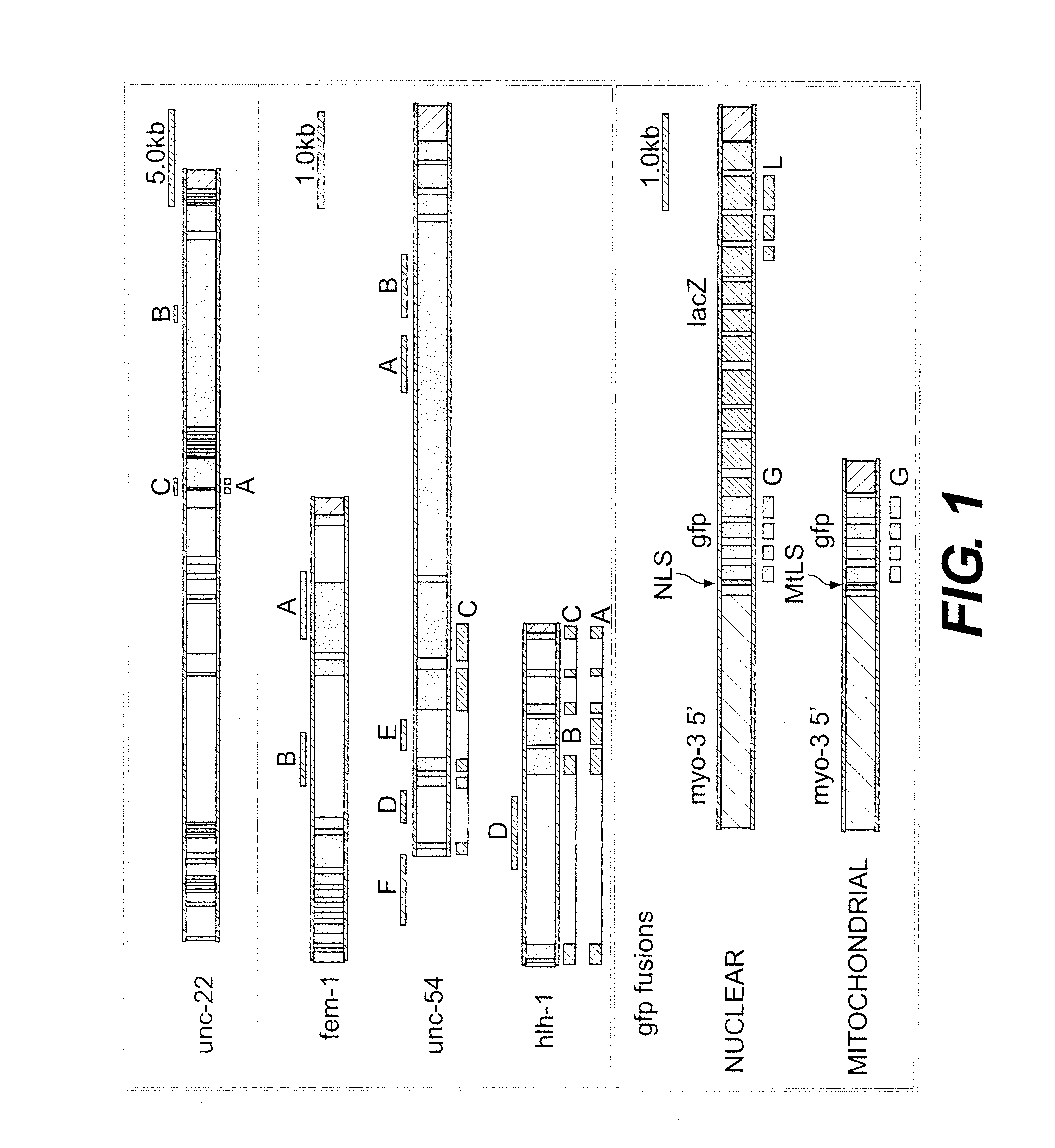Genetic inhibition by double-stranded RNA
- Summary
- Abstract
- Description
- Claims
- Application Information
AI Technical Summary
Benefits of technology
Problems solved by technology
Method used
Image
Examples
Embodiment Construction
[0028] The present invention provides a method of producing sequence-specific inhibition of gene expression by introducing double-stranded RNA (dsRNA). A process is provided for inhibiting expression of a target gene in a cell. The process comprises introduction of RNA with partial or fully double-stranded character into the cell. Inhibition is sequence-specific in that a nucleotide sequence from a portion of the target gene is chosen to produce inhibitory RNA. We disclose that this process is (1) effective in producing inhibition of gene expression, (2) specific to the targeted gene, and (3) general in allowing inhibition of many different types of target gene.
[0029] The target gene may be a gene derived from the cell (i.e., a cellular gene), an endogenous gene (i.e., a cellular gene present in the genome), a transgene (i.e., a gene construct inserted at an ectopic site in the genome of the cell), or a gene from a pathogen which is capable of infecting an organism from which the c...
PUM
| Property | Measurement | Unit |
|---|---|---|
| Fraction | aaaaa | aaaaa |
| Length | aaaaa | aaaaa |
Abstract
Description
Claims
Application Information
 Login to View More
Login to View More - R&D
- Intellectual Property
- Life Sciences
- Materials
- Tech Scout
- Unparalleled Data Quality
- Higher Quality Content
- 60% Fewer Hallucinations
Browse by: Latest US Patents, China's latest patents, Technical Efficacy Thesaurus, Application Domain, Technology Topic, Popular Technical Reports.
© 2025 PatSnap. All rights reserved.Legal|Privacy policy|Modern Slavery Act Transparency Statement|Sitemap|About US| Contact US: help@patsnap.com



